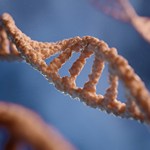Trisomy 18 Awareness Day Date in the current year: March 18, 2026
 Trisomy 18 Awareness Day, also known as Edwards Syndrome Awareness Day, is observed annually on March 18. It was created to raise awareness of a genetic disorder affecting many parts of the body, including the head and heart.
Trisomy 18 Awareness Day, also known as Edwards Syndrome Awareness Day, is observed annually on March 18. It was created to raise awareness of a genetic disorder affecting many parts of the body, including the head and heart.Typically, human cells have 46 chromosomes, organized into 23 pairs. Each pair consists of one chromosome inherited from the mother and one from the father. However, occasionally, either the egg or the sperm cell may carry an additional copy of a chromosome, leading to the embryo inheriting an extra chromosome as well.
This condition, characterized by three copies of a specific chromosome instead of the usual two, is called trisomy. The third copy of the chromosome may be complete or partial. Any of the 23 chromosomes can be affected, but trisomies in most chromosomes result in a miscarriage during the first trimester. However, certain trisomies can lead to a viable pregnancy. These include Trisomy 8 (Warkany syndrome 2), Trisomy 9, Trisomy 13 (Patau syndrome), Trisomy 18 (Edwards syndrome), and Trisomy 21 (Down syndrome).
Trisomy 18 is the second-most common genetic disorder caused by a trisomy after Down syndrome (Trisomy 21). It is also known as Edwards syndrome because the condition was first identified by John Hilton Edwards in 1960, although he initially thought that the extra chromosome was chromosome 17.
Almost 95% of pregnancies affected by Trisomy 18 are not viable, but in rare cases when a fetus survives the pregnancy and birth, the child has Edwards syndrome. As we’ve already mentioned above, it affects many parts of the body. Babies with Trisomy 18 are often small for gestational age and have microcephaly (small head), heart defects, and clenched hands with overlapping fingers. Other physical malformations associated with the include low-set ears, micrognathia (small jaw), cleft palate or lip, webbed toes, clubfoot, and others.
Edwards syndrome is associated with breathing and feeding difficulties, hearing problems, seizures, growth deficiency, developmental delays, and severe intellectual disability. Only about 5–10% of infants with Trisomy 18 survive past their first birthday, and only 1% live to age 10. However, there have been instances of people with Edwards syndrome surviving into their twenties and even thirties.
There is no cure for Edwards syndrome; its treatment focuses on dealing with the symptoms and improving the patient’s quality of life. Children with Trisomy 18 are severely disabled and require special care for their entire lives.
March (the third month of the year) is National Trisomy Awareness Month, and March 18 was designated as Trisomy 18 Awareness Day to specifically highlight Edwards syndrome. It is marked by various events that aim to educate the general public about Trisomy 18 and support families affected by the syndrome.
You can get involved by learning more about Trisomy 18 and sharing the facts you’ve learned with others, donating to an organization that supports children with Edwards syndrome and their families or funds research, and spread the word on social media with the hashtags #Trisomy18AwarenessDay, #EdwardsSyndromeAwarenessDay and #NationalTrisomyAwarenessMonth.
- Category
- International Observances
- Tags
- Trisomy 18 Awareness Day, Edwards Syndrome Awareness Day, awareness days, international observances, chromosome disorders